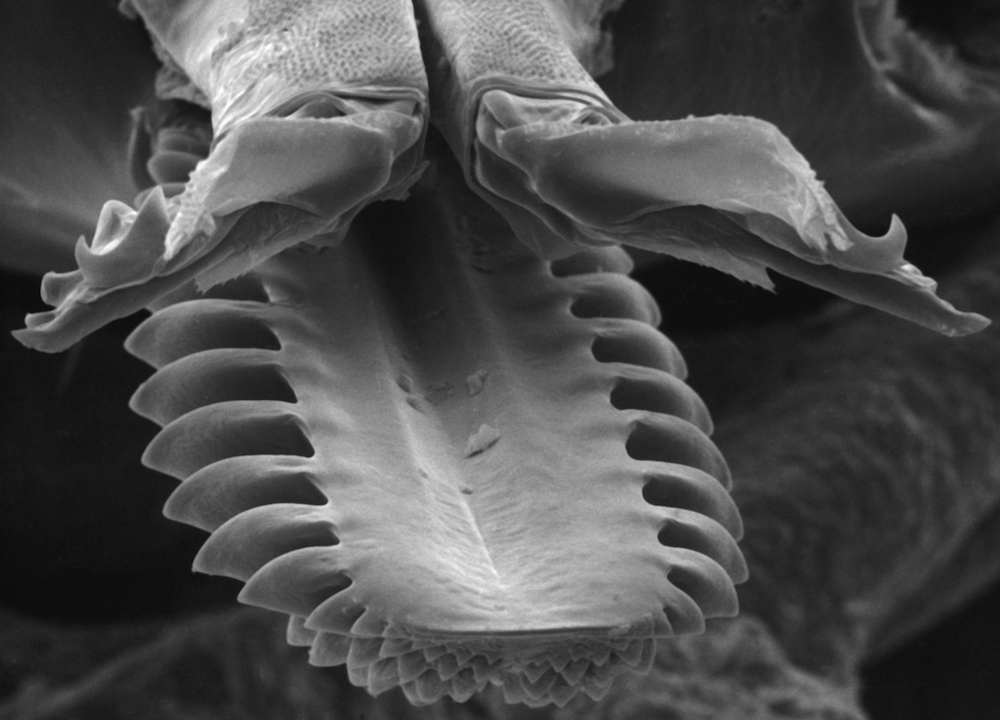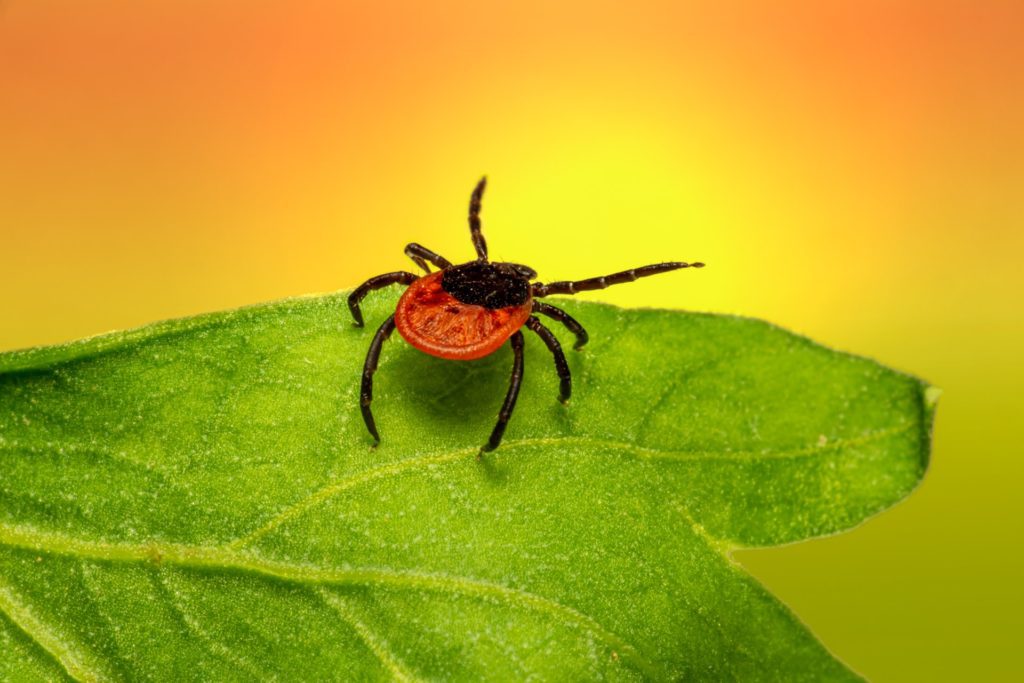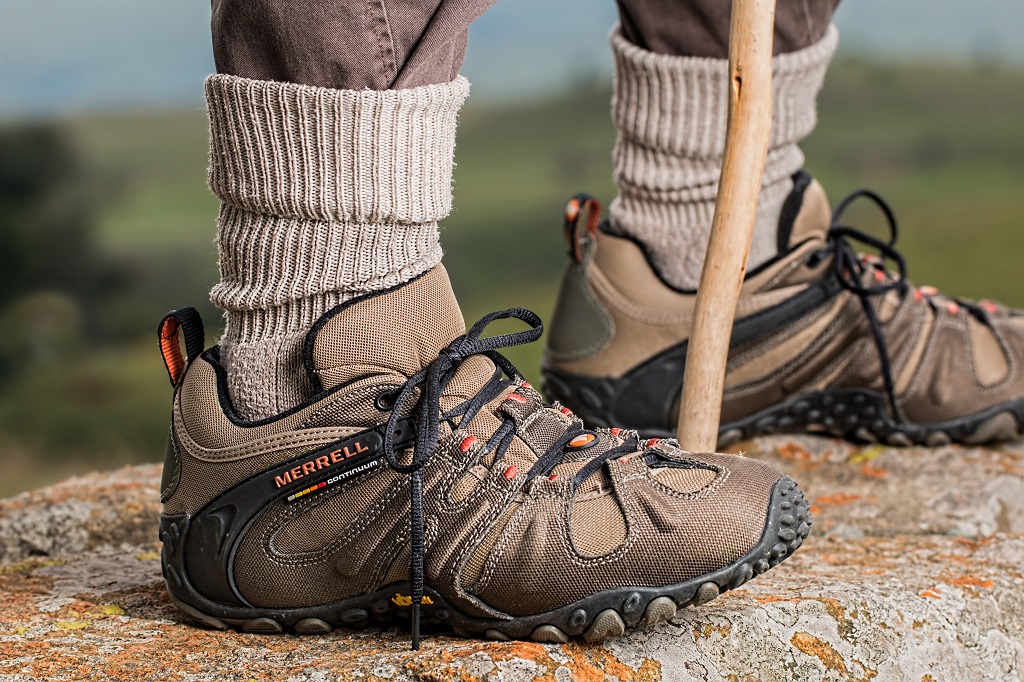Diseased Bloodsuckers
Ticks. We love to hate them, but with good reason: they spread can disease like wildfire. How do they feed, what diseases do they carry, and is there any hope for their hosts?
The Life of a Parasite
What if I told you that ticks have mouthparts shaped like tiny sawblades to cut through the skin of their hosts? Or that their saliva is almost magical in its ability to help it quietly feed while keeping its host unaware of its presence? Well, all this is true and more.

Being a parasite is no easy feat. One must not only find a host, but then feast without being caught. The saliva of ticks is truly a marvel, with different proteins and enzymes that act as anticoagulants (blood thinner), anti-inflammatories (makes sure you don’t feel it), and immunosuppressants (keep the body from attacking the invader). In this way ticks are able to stay attached to their hosts for days in order to feed.
There have been over 3000 different proteins found in tick saliva, and so far we only know what about 5% of those do. Many of them actually perform the same tasks which ticks have the ability to mix into different mixtures of proteins. These mixtures change every few days so that their host isn’t able to get used to them and create a counter-attack. While most tick species have a specific host species they prefer, the vast variety of proteins and enzymes allow them to feed on many different kinds of hosts.
Is Anywhere Safe?
The short answer? No. There are over 900 species of ticks and they can be found on every continent including Antarctica. Different species are incredibly good at surviving very hot and very cold temperatures as well as dry conditions. Ticks are able to feed just once a year when the weather is favorable and then enter a period of rest called diapause which is similar to hibernation.
Ticks tend to be specialists, preferring to feed on one type of animal in their home range. That animal can be a mammal, bird, or even an amphibian or reptile. One species of tick uses sea snakes as its host and therefore has to feed underwater, attached to the snake as it searches for food. In laboratory tests these sea-faring ticks could even stay submerged in salt water for over 24 hours.

Oh, also, ticks can be active year round in most places. There’s even a tick that specializes in migratory seabirds as a host and can be found not only in Antarctica, but along the arctic circle. This species can tolerate temperatures between -30 to 40 degrees Celsius (-22 to 104 Fahrenheit). Stay diligent even when it’s cold out!
Tick Pathogens
Ticks can carry all sorts of nasty diseases which can be transmitted to animals, including many human ones. Some are fairly mild while others like Tick-borne Encephalitis have a mortality rate of up to 35%. Each disease is primarily spread by a certain species of tick, so taking the time to research which ticks live near you can be very helpful in looking for symptoms after a bite.
Some of the more prominent diseases include:
- Lyme Disease (North America, Europe, Asia)
- Rocky Mountain Spotted Fever (North America, Europe, Asia, Australia)
- Alpha-gal Syndrome (North America, Europe, Asia, Australia)
- Tick-borne Encephalitis (Europe and Asia)
- African Tick Bite Fever (Africa)
But wait, a vaccine?
There’s no arguing that ticks are a major health hazard to humans. Because of this, many scientists around the world are looking into tick vaccines to keep people safe. Rather than focus on the diseases they spread, much of this new technology looks back that that miraculous tick spit to fight back. If a vaccine can help a person’s body notice the special proteins in the tick’s spit then the body can start to create a counter-attack.
A vaccine could work in two different ways: 1) make it so tick bites create an immune response in humans so the body can fight back or 2) arm the body with the ability to destroy the cement that some ticks use to attach themselves so they simply fall off. The simplest immune response to give people is simply the ability to make the bite itch. If a tick bite itches then you are more likely to notice the tick and remove it before it can transmit a disease. There are some studies that suggest exposure to many tick bites can help the body create that itchy immune response even without a vaccine. Obviously this comes with risks, so don’t go around getting bit on purpose. It’s good news to those who work outside however!
Tick vaccine research is still ongoing, though a few already exist. August 2021 saw the FDA approving a Tick Borne Encephalitis vaccine. As of November, 2021 an mRNA-based vaccine for Lyme Disease is underway but still not available for humans.
Tick Prevention
What is the best way to avoid bites? Repellants are a good start! The Environmental Protection Agency has a great website to help pick a repellant that works. We’ve personally found that bug sprays with high DEET or Permethrin work best. Permethrin is lesser known, and must be applied to clothing and allowed to dry before use. If properly applied, it can provide protection over several washes. If you have a favorite outdoor outfit, Permethrin is the way to go!
Proper clothing can go a long way. Wear long pants and long sleeve shirts when out in tick-heavy areas. Tuck your pants into your boots or socks, wear a belt, and you can even wear rubber bands or scrunchies on your shirt sleeves. All these “choke points” where your clothing is tight will help keep ticks out, and also create areas to quickly search when you get home.
Which brings us to one of the most important parts of tick safety: tick checks. When you come in from outside, check your crevices! Ticks love to hide anywhere that is tight, which could be around a belt line, under a bra strap, or right at the top of your socks. A quick shower with a washcloth and diligent scrubbing will rub off any tick not attached. If you have someone you trust (who has good eyesight) have them check you over too, especially your back. Clothes from your outdoor adventure need to go straight into the wash. If you are diligent, it’s unlikely you will end up with a tick attached to you long enough to transmit a disease.

Lots of scary things talked about here but it all comes with one big reminder: with proper prevention and monitoring of bites, tick-borne diseases pose little risk to most people. It is important to know what species of ticks live in your area and what diseases they can transfer so take a moment to do a little research to keep you, your family, friends, and pets safe. Keep hiking, biking, climbing, and otherwise playing in the great outdoors. Don’t let the ticks win.
Sources/Further Reading:
- Scallan, M. 2015. “How do ticks… tick?” Smithsonian Sparks.
- Zhang, S. 2019. “What Tick Saliva Does to the Human Body”. The Atlantic.
- Benelli G. (2020). Pathogens Manipulating Tick Behavior-Through a Glass, Darkly. Pathogens (Basel, Switzerland), 9(8), 664.
- Lee, R. E., & Baust, J. G. (1987). Cold-Hardiness in the Antarctic Tick, Ixodes uriae. Physiological Zoology, 60(4), 499–506.
- Find the Repellant that is Right for You. U.S. Environmental Protection Agency.
- TickEncounter. University of Rhode Island.
- Bischof, M. Interactive Identification Key for the Hard Ticks of the Eastern U.S. Georgia Southern University.
Did you spot an error or have questions about this post? Email Nicole Brown.
